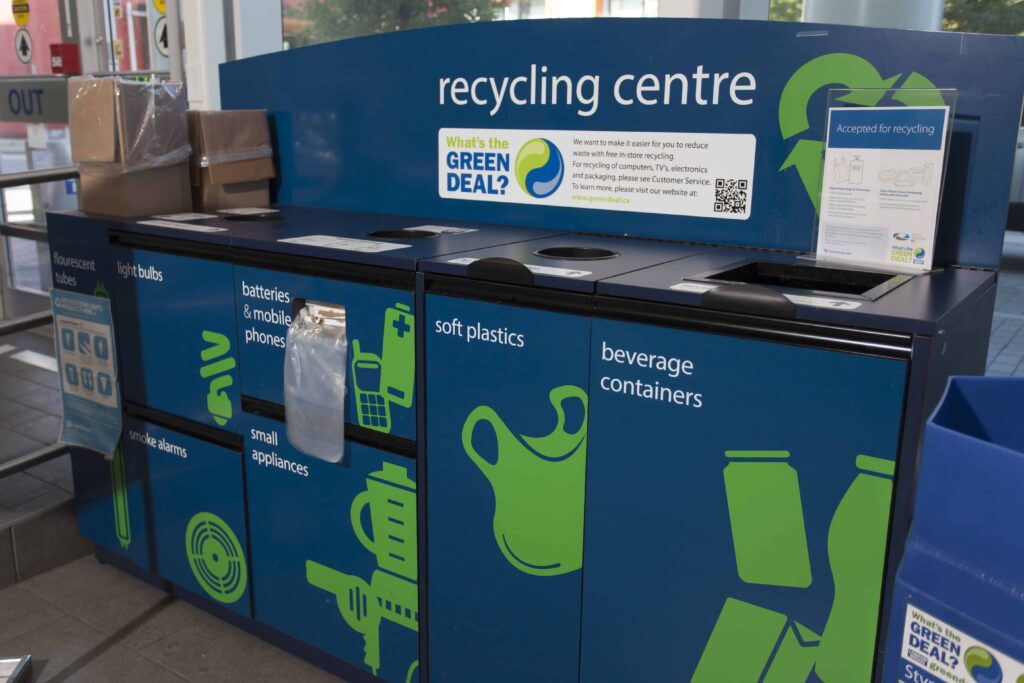The recycling industry is filled with an alphabet of acronyms and unfamiliar words. Have you heard any of these and wondered what they mean?
Collector: Collectors in the Multi-Material BC (MMBC) residential packaging and printed paper recycling program arrange for materials to be picked up from residents’ curbs or multi-family buildings or accept materials from depots. In some communities, the municipal government operates the collection trucks or depots, and in others, they are operated by a private company that has a contractual agreement with the municipality or with MMBC. Sometimes collectors are referred to haulers.
Collection Container: The collection container is the recycling box, bin, cart, or bag used to store recycling until the collector picks it up. Different communities use different types of collection containers, depending on the types of collection trucks used to transport the materials from residents’ curbs or multi-family buildings to the transfer or sorting facility.
Fibres: This is another way of referring to paper and cardboard. Read more about paper recycling here: http://recyclinginbc.ca/focus-on-materials-paper-recycling-part-1/ and here: http://recyclinginbc.ca/focus-on-materials-paper-recycling-part-2/.
EPR: EPR, or extended producer responsibility, is the model under which the MMBC residential packaging and printed paper recycling program operates. EPR is a government policy that requires that the producers of the material are responsible for managing it when residents are finished with it. Read more about EPR here: http://recyclinginbc.ca/extended-producer-responsibility-anyway/
MRF (sounds like murf): This stands for material recovery facility, and is where your packaging and printed paper is sent to be sorted and baled. Sometimes MRFs are referred to as sorting facilities. Learn more about MRFs here: http://recyclinginbc.ca/recycling-infographic/
Multi-stream: In multi-stream recycling, residents sort materials into multiple categories, most frequently Containers and Paper and Cardboard (or Fibres). Where non-deposit glass containers and jars are collected as part of the MMBC program, the containers are collected in a separate box or bin to avoid having broken pieces of glass mix with other recyclables. See also “single-stream”.
PE, PP, PS: These are abbreviations for different types of plastics. Read more about plastic resins and their codes here: http://recyclinginbc.ca/packaging-codes-explanation/. MMBC doesn’t use resin codes to identify plastic packaging accepted in the residential packaging and printed paper recycling program because the codes are voluntary and used inconsistently. Instead, we ask residents to check the list of accepted items, here: http://recyclinginbc.ca/program/mmbc-materials-list/
Residential: Residential recycling is the collection of materials, either from residents’ curbsides, multi-family buildings, or depots. MMBC manages residential recycling programs for packaging and printed paper through much of BC.
Single-stream: In single-stream recycling, paper, cardboard, and metal and plastic containers and paper cartons are mixed in the same recycling collection box, cart, or bag. Where non-deposit glass containers and jars are collected as part of the MMBC program, the containers are collected in a separate box or bin to avoid having broken pieces of glass mix with other recyclables. See also: “multi-stream”.
Transfer Facility: Once material is collected, it is taken to a transfer facility to be consolidated with other collected material before it is taken to a material recovery facility, or MRF, to be sorted and baled. MMBC’s collection system has transfer facilities throughout the province.


